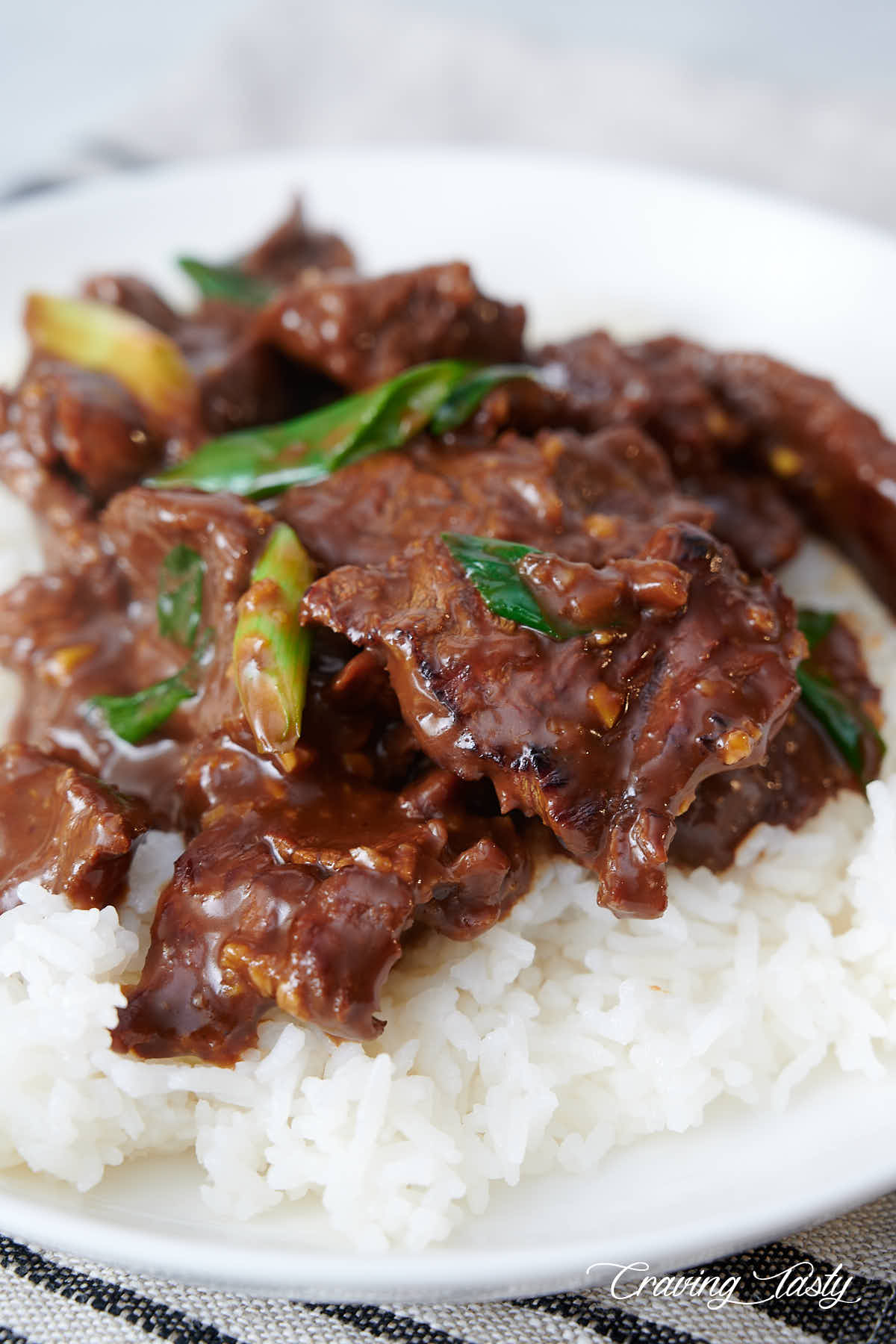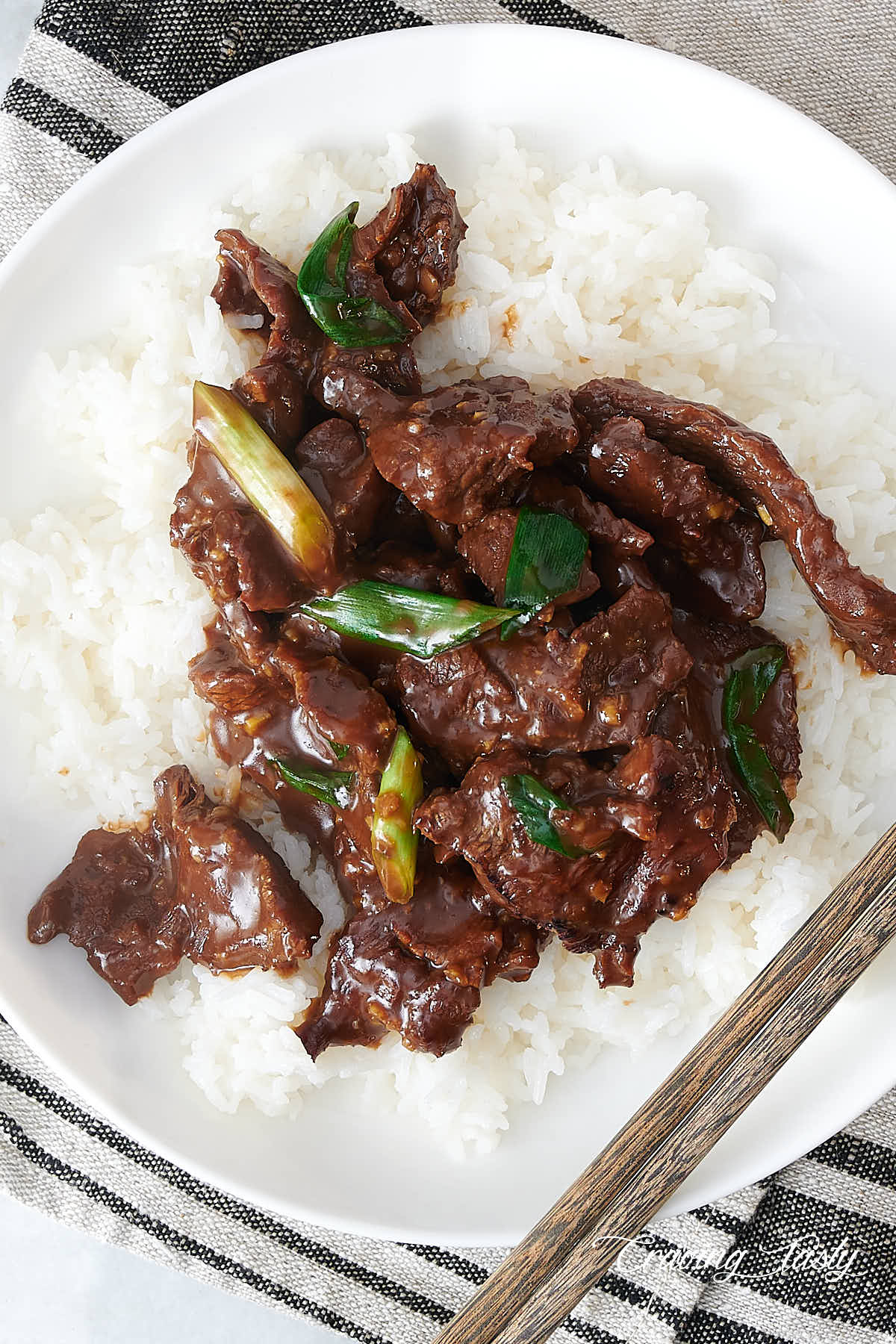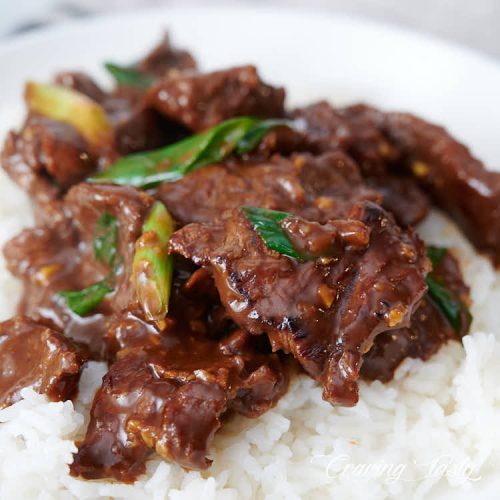In case you wonder, Mongolian Beef has nothing to do with Mongolia. The dish is as much Mongolian as French Dressing is French. The true origins of Mongolian Beef are not clear. Some believe that this dish originated from China, where naming restaurants or dishes after Mongolia is appealing to the local population. Mongolia’s harsh continental climate has greatly influenced its traditional diet, which primarily consists of dairy products, meat, and animal fats, with a noticeable shortage of vegetables and spices. In contrast, a meat-rich diet in China is a luxury that few can afford. What Mongolians eat is perceived as very desirable in China. Hence, in many Chinese restaurants, it’s common to see dish names such as Mongolian Beef, Mongolian Chicken, etc. Others argue that the name is just an exotic name invented by Chinese-American restaurateurs and food marketers to increase the appeal of the dish. That surely makes sense – stir-fried beef doesn’t sound nearly as special as Mongolian beef.
Selecting the meat
The choice of beef for this dish is very important. You want to pick the cut that is inherently tender. My favorite cuts are flanks steak (most commonly used to make Mongolian Beef), beef tenderloin and sirloin tip, also known as flap meat or’ faux hanger’ steak. The sirloin tip is the best value of the three as it’s least expensive of the three. I also discovered that beef chuck works just as well for making Mongolian beef. It’s a little tougher, and the cooking time is short, so I cut it thinly across the grain and pound with a tenderizer (the spiked side). This works wonderfully, giving me perfectly tender meat.
Using dark soy sauce
I incorporated dark soy sauce in this dish, after trying it in my Thai pork recipe. Dark soy sauce is less salty, has a deeper color and more body and is commonly used in Asian cooking. When you order Mongolian beef from restaurants, chances are that they used dark soy sauce to make that velvety smooth sauce. This type of soy sauce is readily available at most, if not all, local Asian grocery stores. If you can’t find it, you can order online or substitute with low sodium soy sauce.
Serving Mongolian beef
Plain white jasmine rice is my top choice here. It perfectly complements the richly flavored, saucy beef. You can also serve this dish with Japanese-style ramen noodles or steamed vegetables. such as broccoli, green beans, cauliflower, and more. Recipe updated on November 28, 2019


